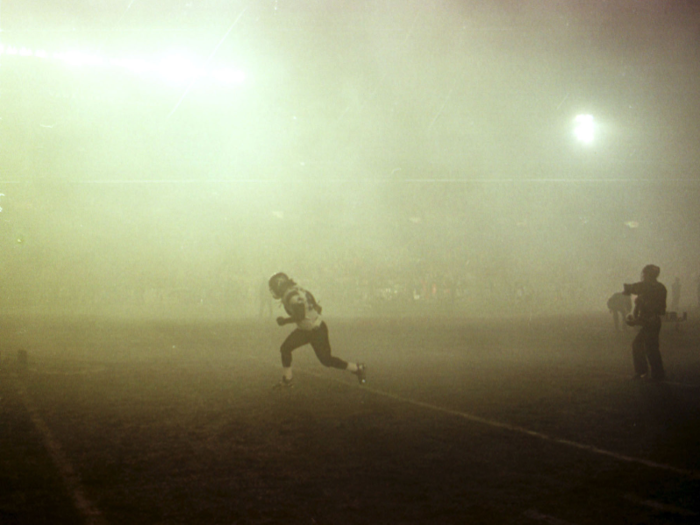- Home
- slideshows
- miscellaneous
- The rise and fall of XFL - Vince McMahon's wild, sexualized, exaggerated answer to football that lived and died in one season
The rise and fall of XFL - Vince McMahon's wild, sexualized, exaggerated answer to football that lived and died in one season
At the beginning of the new millennium, the NFL was a different beast. Rules restricted the game, and quarterbacks were treated like the "Shah of Iran," according to then-NBC Sports chairman Dick Ebersol.

So when WWF chairman Vince McMahon, Ebersol's former business partner, broached the idea of a new football league, Ebersol was listening.
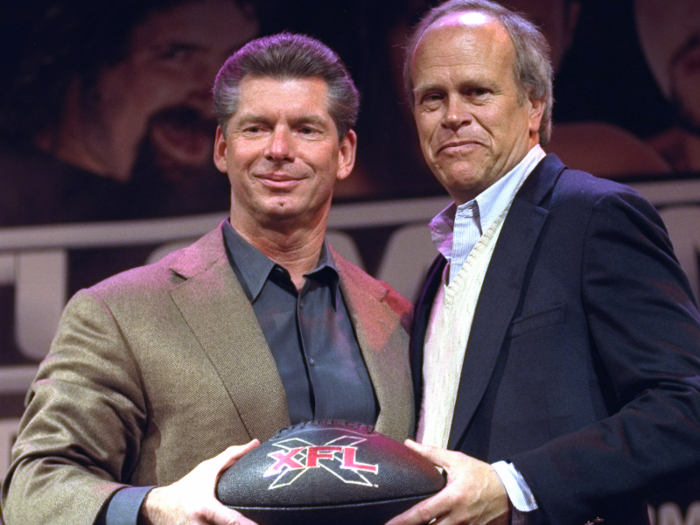
Source: Wall Street Journal, HuffPost
McMahon was a "broad-shouldered promoter and showman," as the Wall Street Journal wrote, who had turned wrestling into "a global media powerhouse," and in turn become a "thundering on-camera character himself." But wrestling was no longer enough. He had to change football, too.
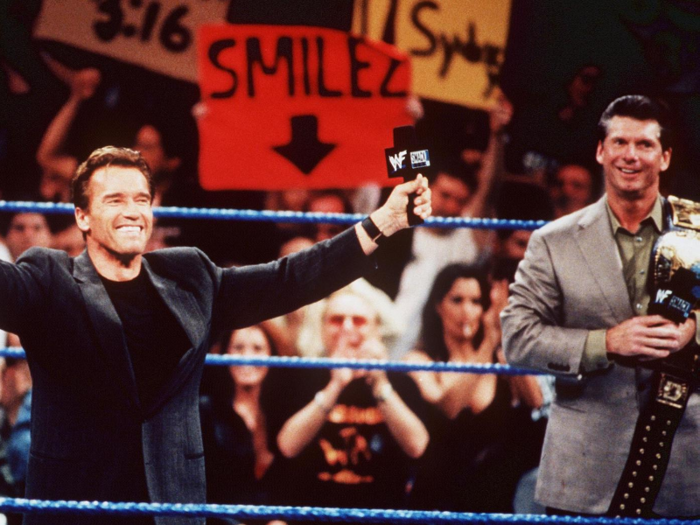
Source: Wall Street Journal, HuffPost
Football wasn't ferocious enough for McMahon. He wanted to take on the NFL, or what he called the "No Fun League." In February 2000, he announced he was launching the XFL.
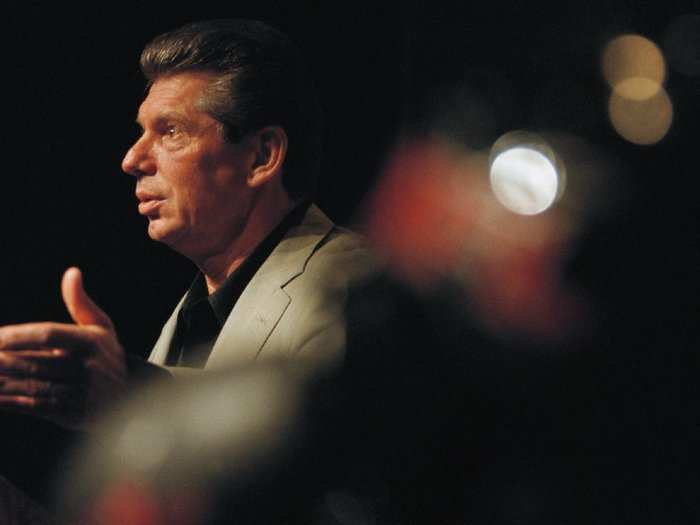
Sources: GQ, Wall Street Journal, The New York Times
At an early press conference, he said, "This will not be a league for pantywaists or sissies."
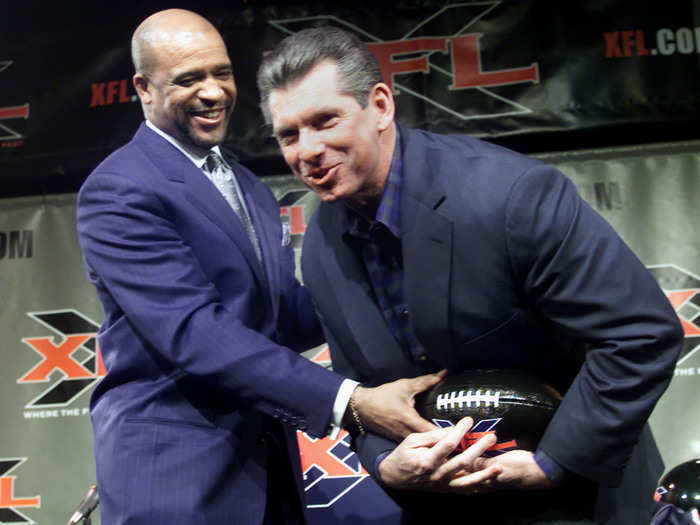
Sources: Wall Street Journal, Los Angeles Times
McMahon sold it as a sports version of "Survivor." Each game would be an episode built around personalities, and filled with suspense.
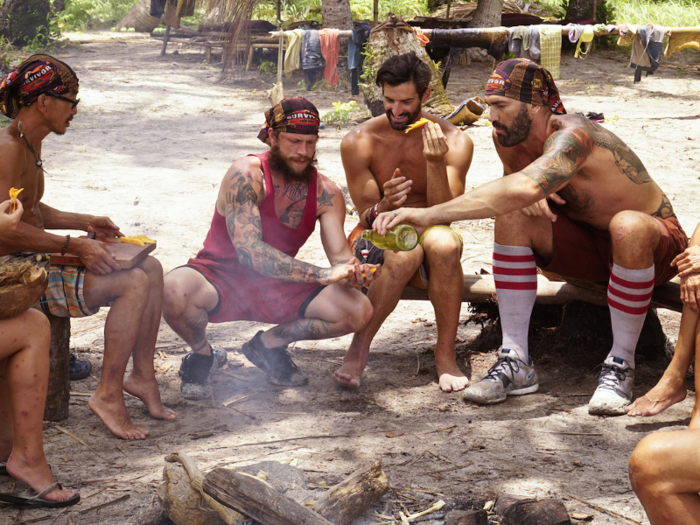
Source: The New York Times
The league formed in 2000, and was an equal partnership between the WWF and NBC. Unlike the NFL, all eight teams were owned by XFL, which meant McMahon and Ebersol had more leeway.
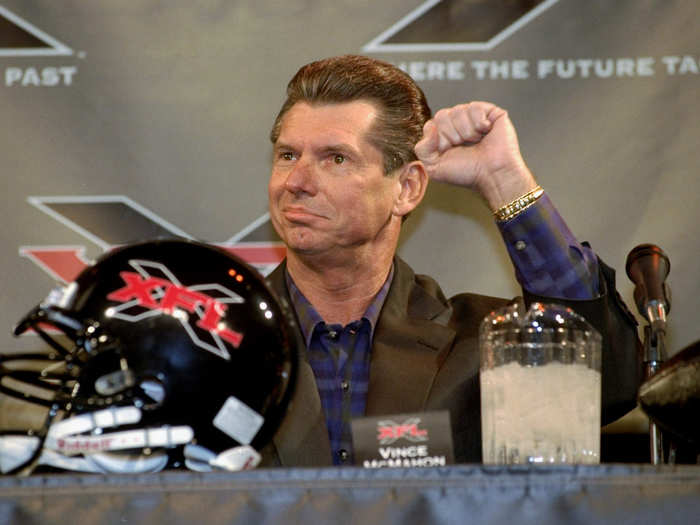
Sources: Los Angeles Times, HuffPost
The rules were different. No more civilized coin toss. Instead, players sprinted to the middle of the field to fight for the football. The scrap for the ball ended one player's season after he separated his shoulder. The league also abandoned the no fair catch rule.
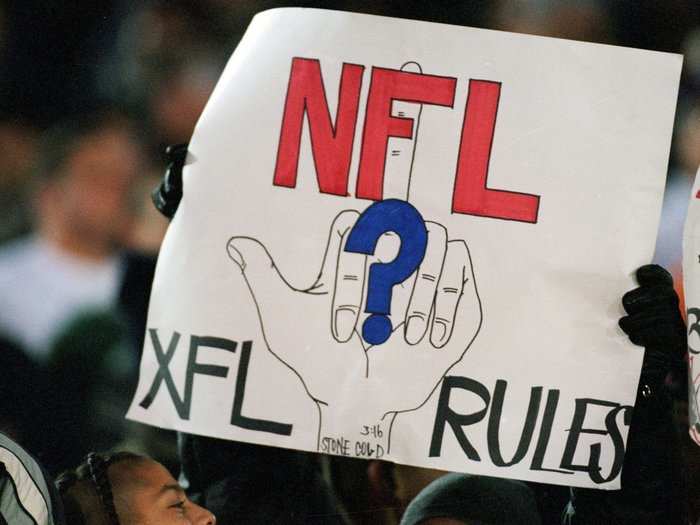
Sources: The Stranger, The Comeback, The New York Times
McMahon built expectations. Ebersol told HuffPost, "The anticipation became so enormous that it blew us away." He added, "We definitely overhyped it."
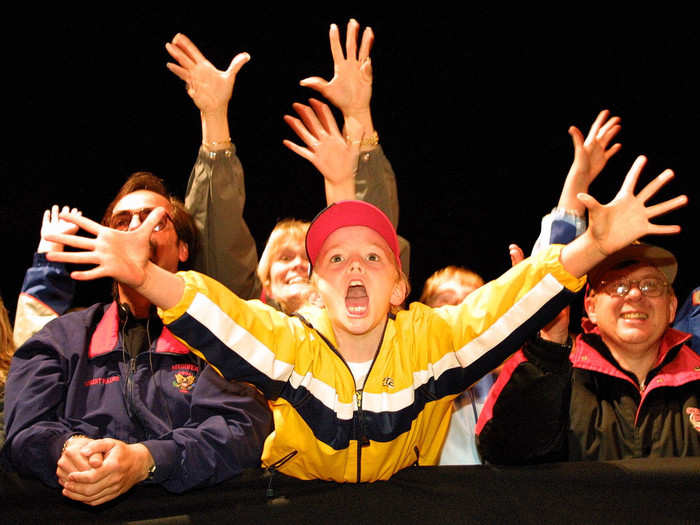
Another was helmed by former linebacker Dick Butkus. Talking to the camera he said, "Player substitutions. Rotating zones. The game is becoming so sophisticated." The camera then zoomed into his face for a close up as he said, "How about this? Kill the guy with the ball."
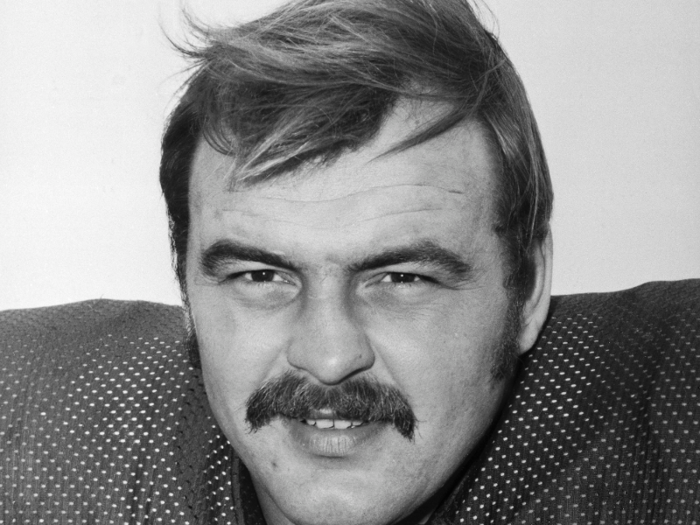
Source: The New York Times
Teams' names promoted violence or criminality, like the Orlando Rage, New York/New Jersey Hitmen, and the San Francisco Demons.
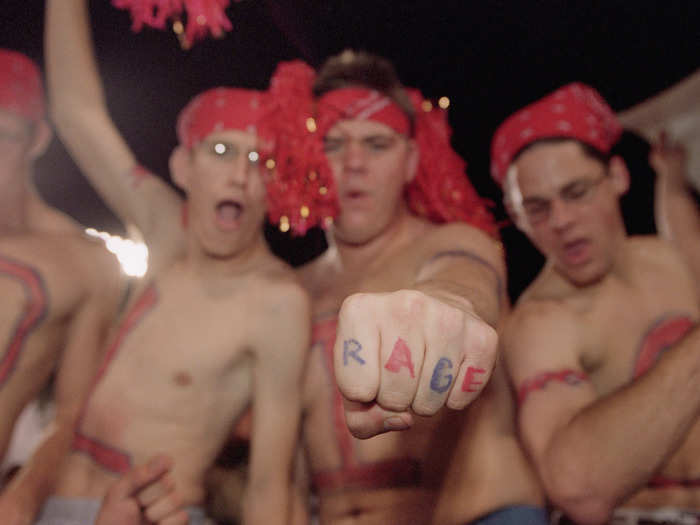
Sources: The New York Times, LA Mag
The league encouraged players to put nicknames on their jerseys. Here, Las Vegas' Rod Smart wore "He Hate Me."
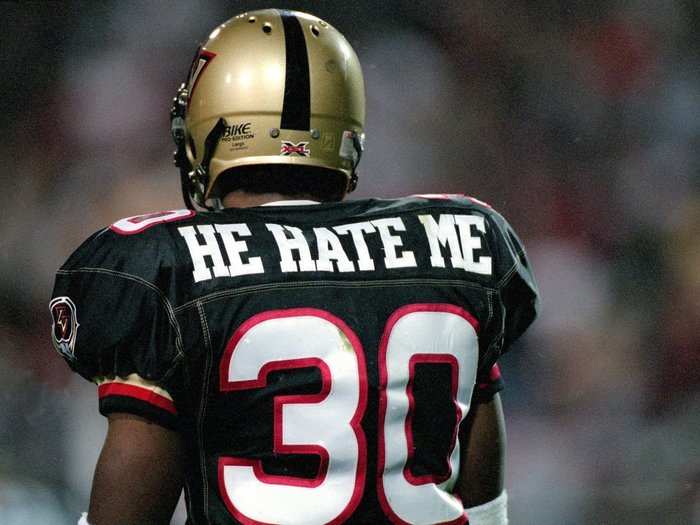
Source: Wall Street Journal
Armored cameramen were prepped to sprint onto fields to get close-ups of the action. Some players wore mics, allowing the audience to hear their painful knocks and tumbles.
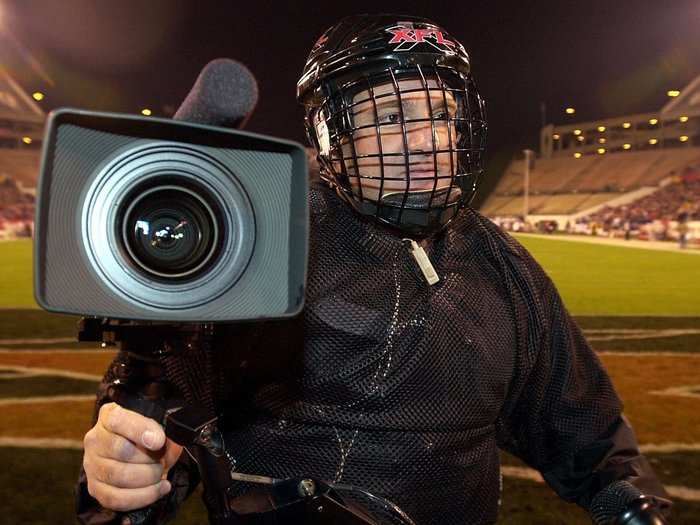
Sources: The New York Times, The Comeback
The league wasn't just pushing violence. Baltimore Ravens' owner Art Modell told The New York Times that the XFL was "selling sex." He wasn't exaggerating, by much.
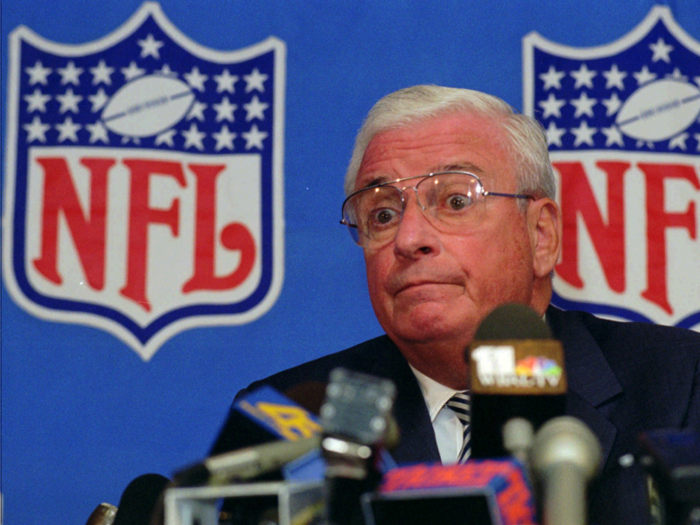
Sources: GQ, The New York Times,
Once the league's website was up and running, but before any games had been played, it streamed videos of cheerleaders. Teams devoted up to three pages of their media kits to cheerleaders. Some listed the women's tattoos and piercings.
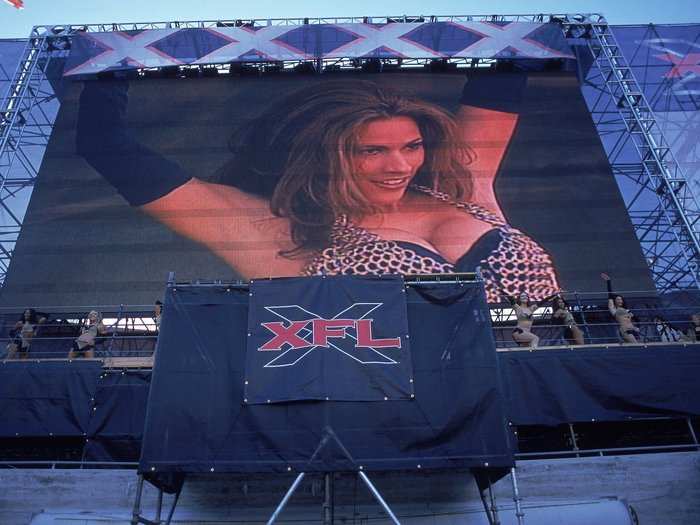
Sources: GQ, The New York Times, Orlando Sentinel
In contrast to the NFL, cheerleaders were encouraged to date players. In one half-time stunt, there was a filmed dream sequence heading into the cheerleaders changing room. It was called the "worst halftime stunt in history."
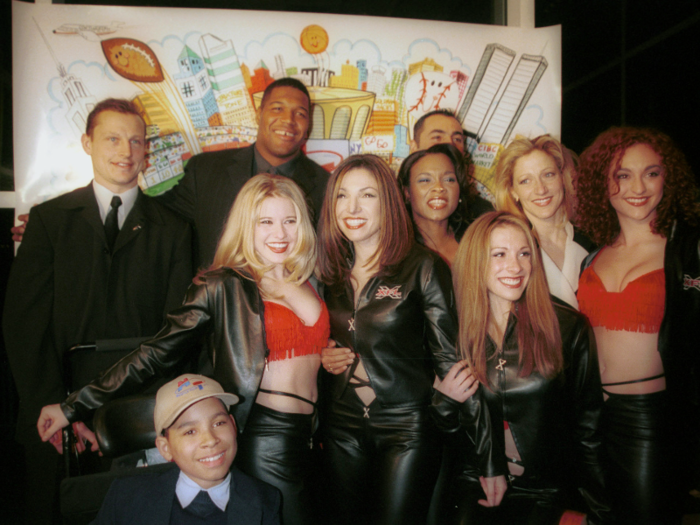
Sources: LA Magazine, HuffPost, BarDown, YouTube
Once games were underway, the league even set up hot tubs at either end of the field, filled with strippers.
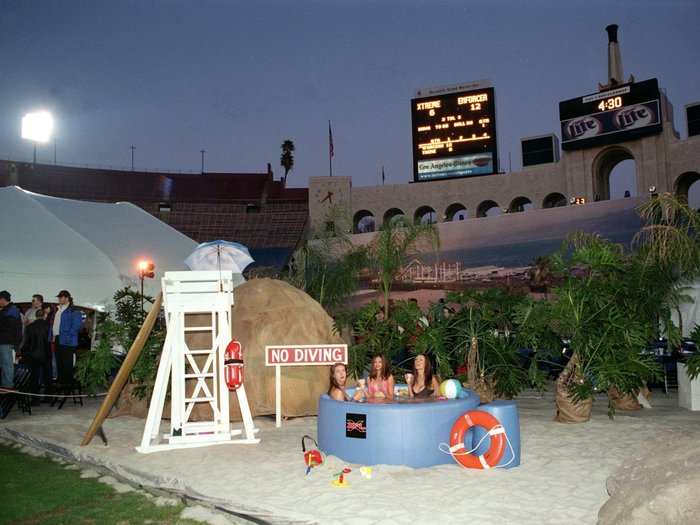
Sources: LA Magazine, HuffPost
It wasn't all lewd. The league also provided players, who hadn't cracked the NFL or whose career had slowed, an opportunity to play in front of millions. The LA Times wrote that the XFL allowed many to "again dream about the fame and riches offered by the NFL."
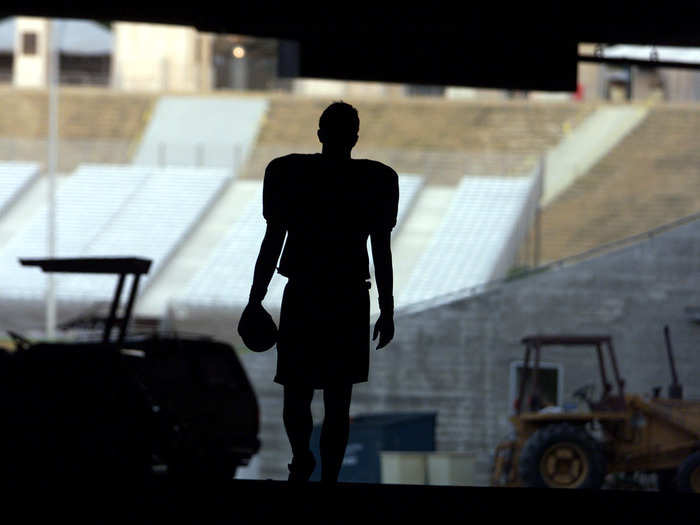
Source: Los Angeles Times
But training camps didn't begin until January 2. Teams had only 32 days to prepare for kickoff.
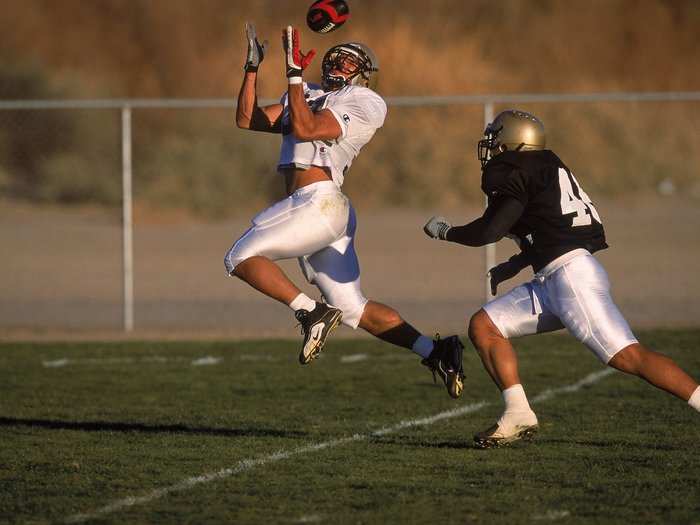
Source: Wall Street Journal
On January 9, almost exactly a month before the league launched, a blimp covered in XFL advertising came crashing down in Oakland, causing about $2.5 million in damage. Looking back, it's hard not to see it as an omen.
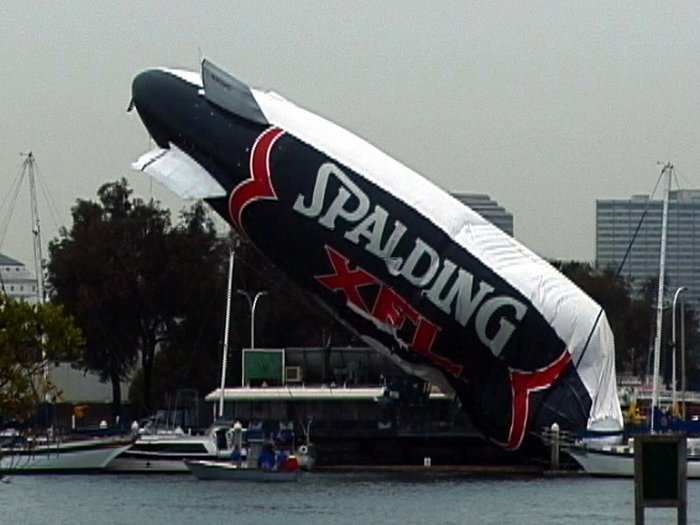
Source: ESPN
Two weeks before kickoff, the network decided to broadcast a game from Las Vegas rather than Orlando. Ebersol later lamented the swap, since the Orlando game was a "barnburner with tons of touchdowns scored and violence."
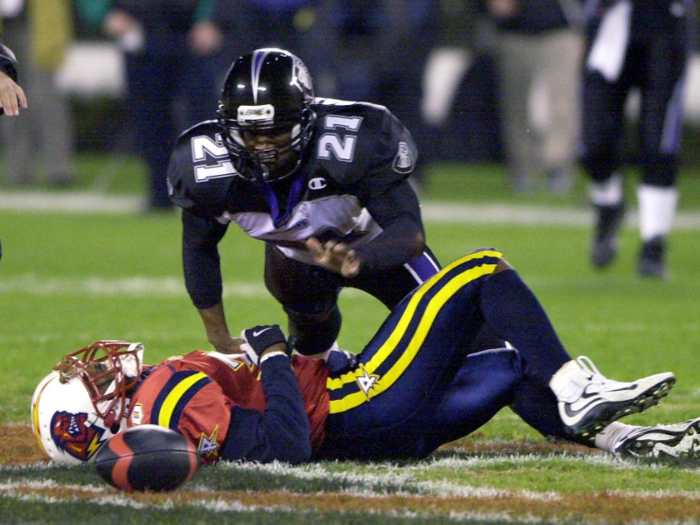
Source: HuffPost
On February 3, 2001, the XFL had its opening game in Las Vegas. The Las Vegas Outlaws beat the New Jersey Hitmen 19-0.
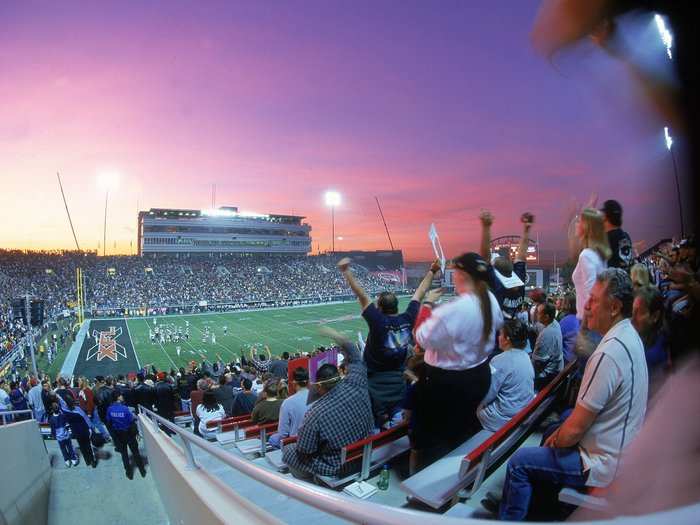
Sources: HuffPost, Wall Street Journal, YouTube
According to the Orlando Sentinel, before the end of the first quarter, a beer stand had to close down after selling out 18 kegs of beer as fans chanted, "Beer! Beer! Beer!"
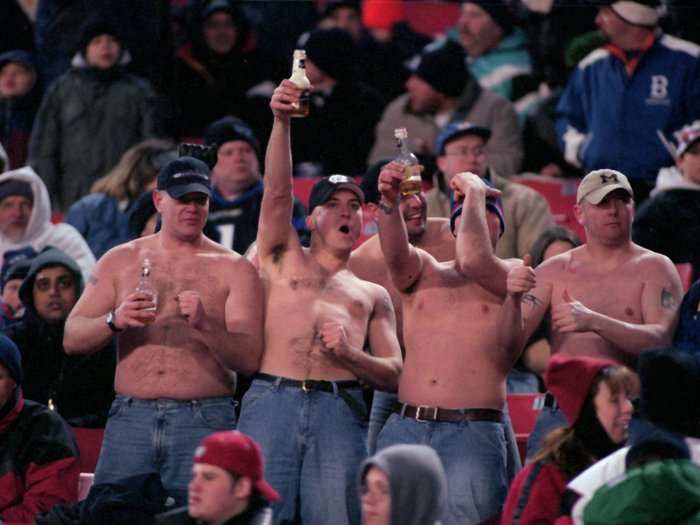
Sources: New York Post, Orlando Sentinel
The fans liked it, at first. Opening night had 16 million viewers, and a Nielsen rating of 10.3 — a blockbuster outing.
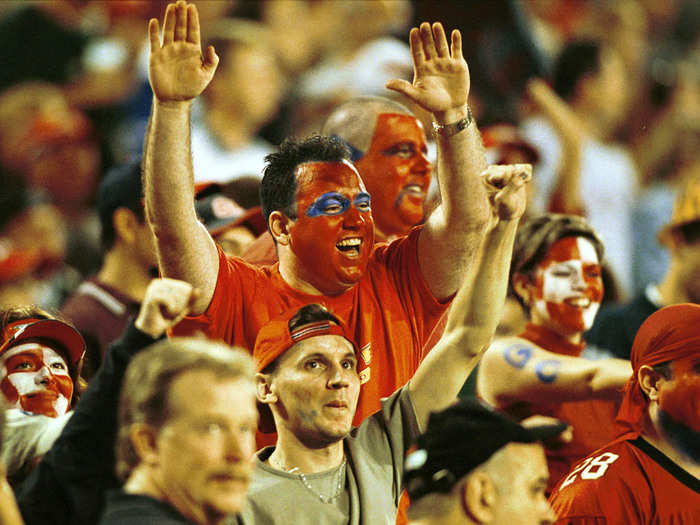
But it was already obvious, at least to Ebersol, that it wasn't going to last. He told the Wall Street Journal, "By halftime I knew in the pit of my stomach that this was really just terrible football."
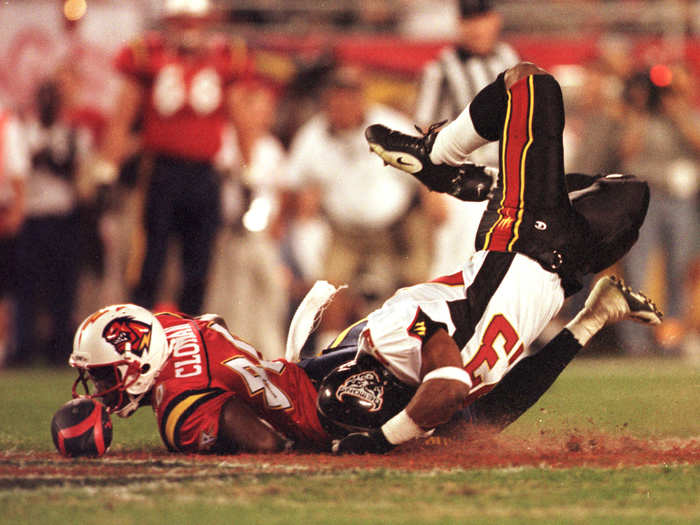
Source: Wall Street Journal
For all of McMahon's bright lights and smokescreens, the actual quality of play, or lack thereof, couldn't be ignored.
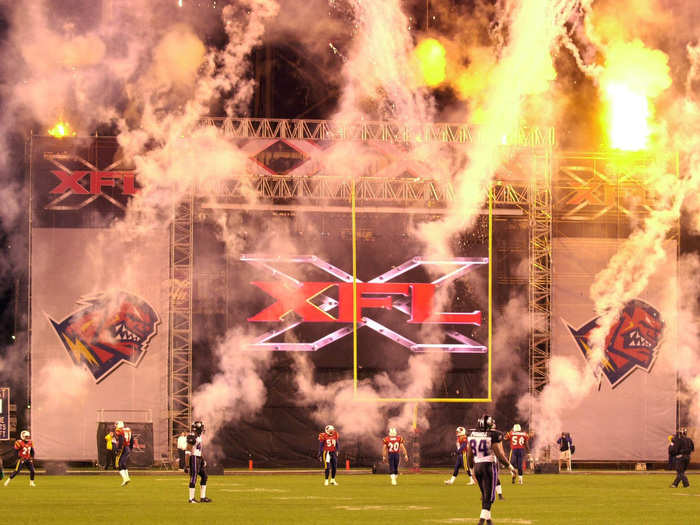
The content also antagonized some football purists. Chet Simmons, the first ESPN president, said he had a decades-long relationship with NBC, but after watching the opening night he was "ashamed to have any kind of association – even a distant one – with NBC."
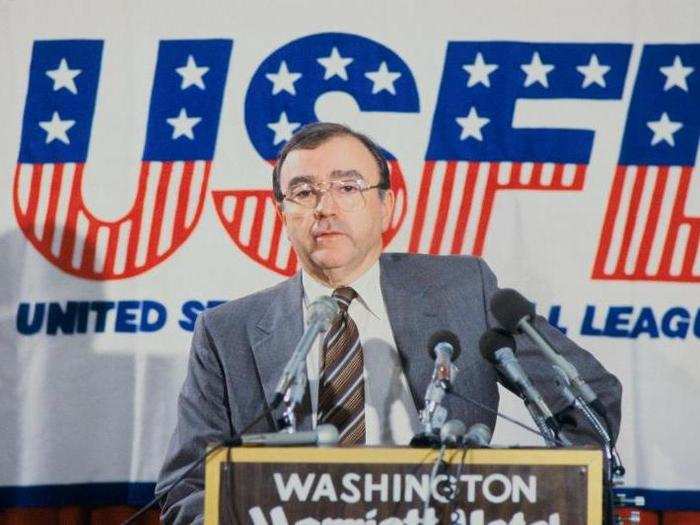
Source: New York Post
He said he was "frightened" after watching the first game. "I saw exactly what they were selling — a little boy holding a sign that read, 'I'm here to see the cheerleaders,' close-ups of cheerleaders acting like strippers, the vulgar comments and sexual innuendo out of the mouths of the announcers," Simmons told the New York Post at the time.
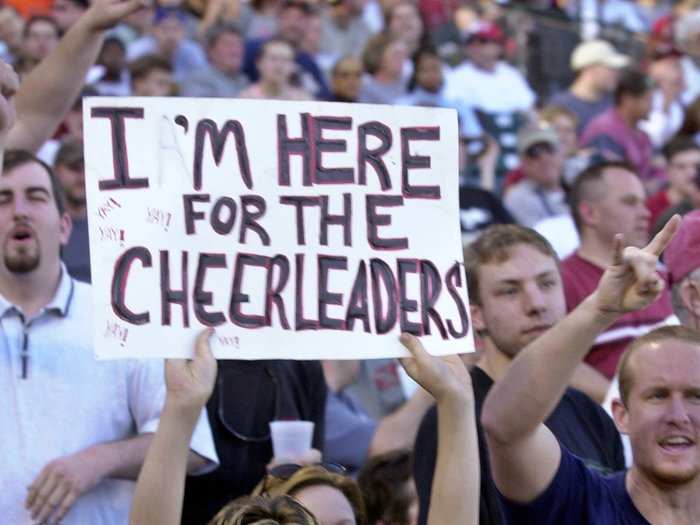
Source: New York Post
Unfortunately, it wasn't just children.
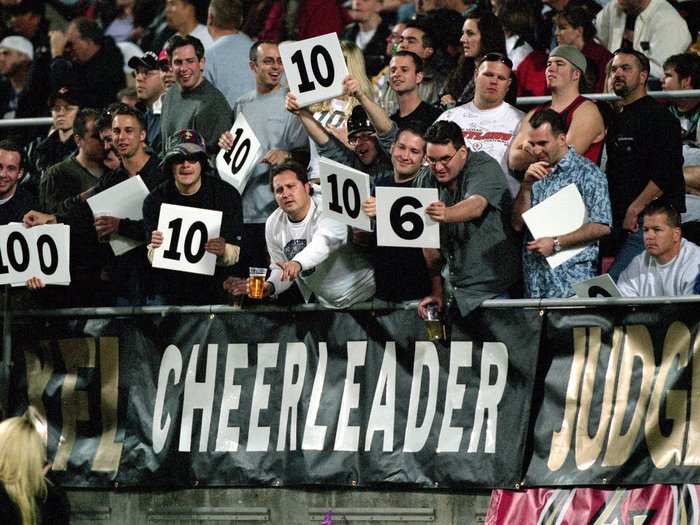
Things deteriorated the following week in Los Angeles. WWF wrestler The Rock was one of the acts, and during a non-scripted speech, he told NFL management to take bags they'd used to move from the city, "turn them sideways, and stick them straight up your candy a--."
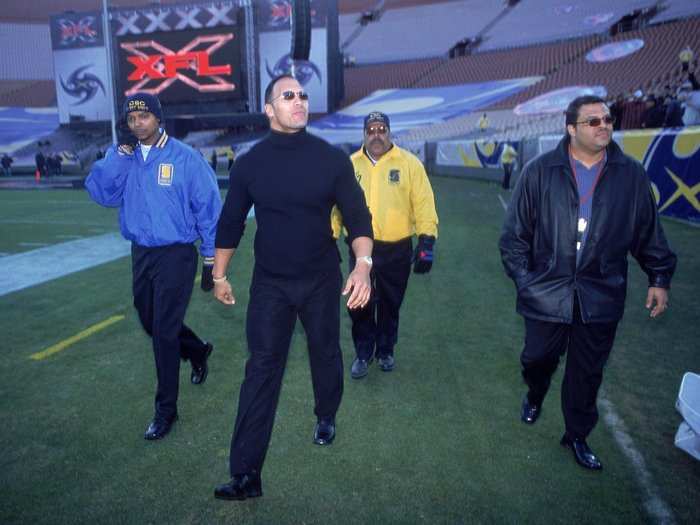
Source: Wall Street Journal
Fans fought in the seats.
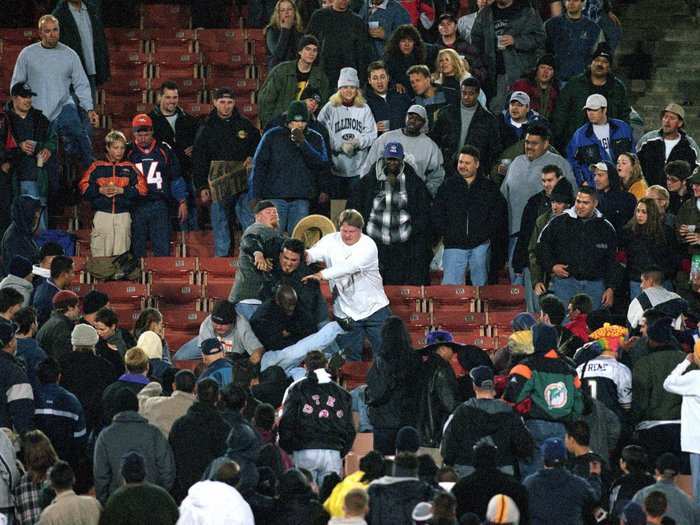
But the biggest issue was a late broadcast. Someone forgot to fill a generator with gas, causing a power failure that broadcast 90 seconds of dead air on NBC. Then an injured player halted the game for 14 minutes. All of this delayed "Saturday Night Live" until 12.20 a.m.. Jennifer Lopez was the host that week, and Lorne Michaels was livid.
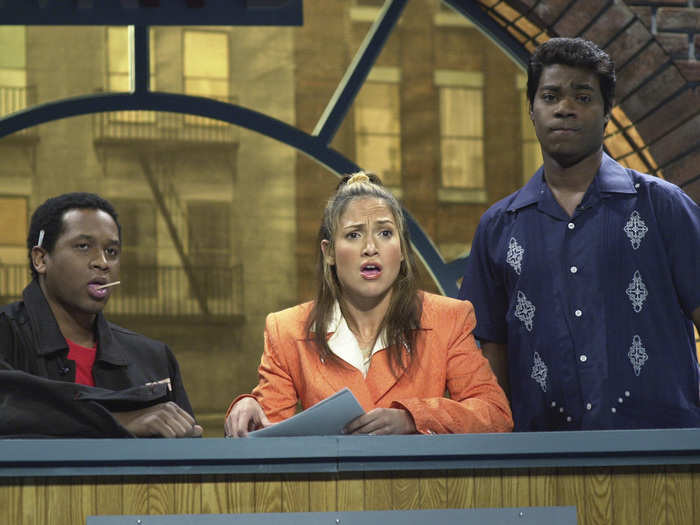
Sources: The New York Times, Wall Street Journal, GQ, Wall Street Journal
Doubts at this point began to bubble through the network. NBC Entertainment president Jeff Zucker told The New York Times, "We are not absolutely not abandoning the XFL. We are absolutely committed to it for the full season." But viewership had halved after one week.
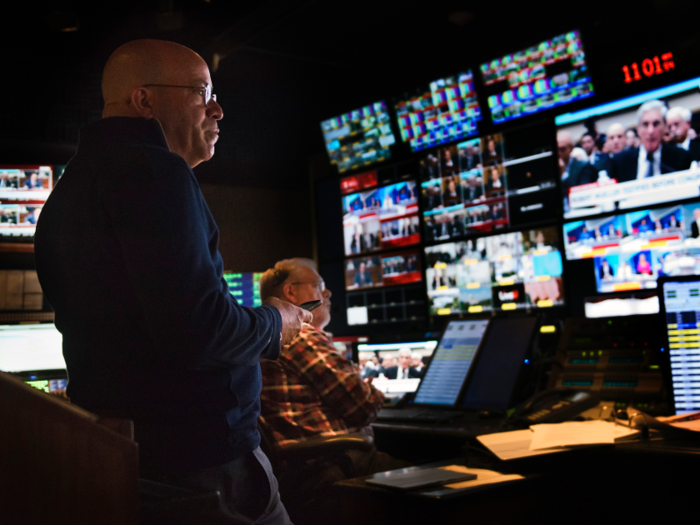
Source: The New York Times
By February 28, ratings were in free fall. Still, NBC said it was committed to not just finishing the season, but a second season, as well. It was delaying the inevitable.
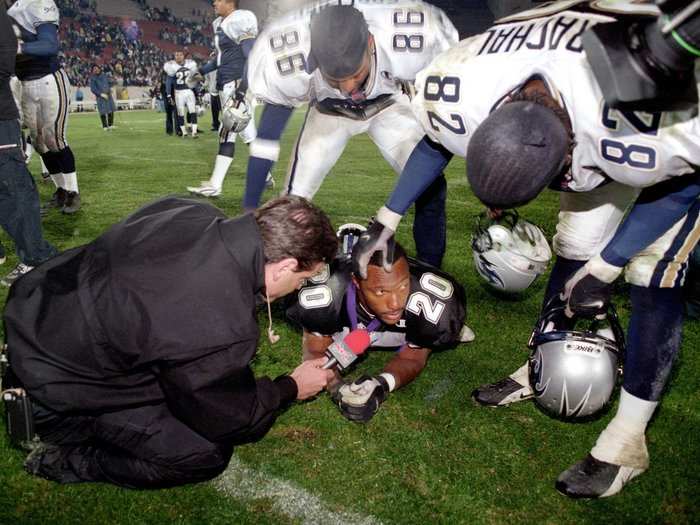
Sources: Los Angeles Times
Ebersol summed it up to HuffPost: "The league had already shown the viewers really crappy football, and the viewers weren't going to come back ― they weren't going to be fooled for a second time."
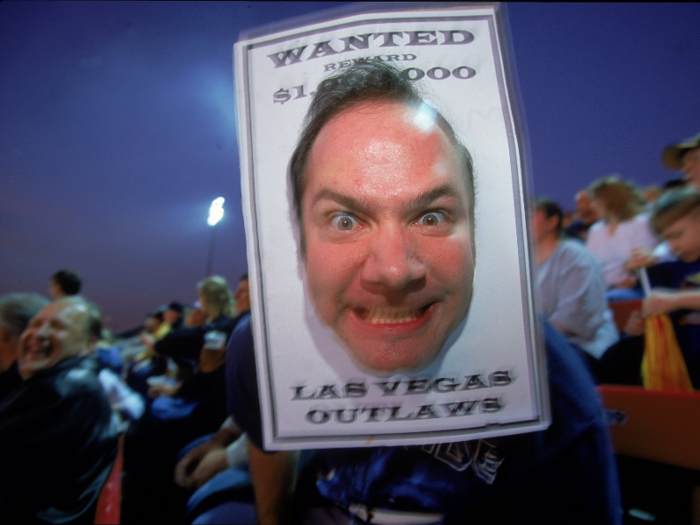
Source: HuffPost
Within eight weeks, the league broke the record for the lowest prime-time ratings for a major broadcast network. It got a 1.6 rating, and 2.2 million viewers. By March 17, it was all over.

In the last 10 days, people began to abandon ship. Five players signed over to the NFL, including Jeremaine Copeland, who went to the Dallas Cowboys.
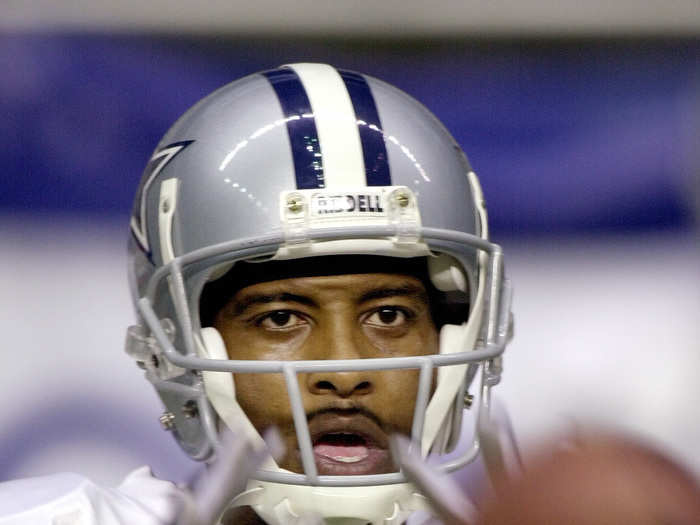
Source: Los Angeles Times
The XFL lasted only 12 weeks. According to GQ, the most frequently cited reason for XFL's failure was that the quality of play "sucked."
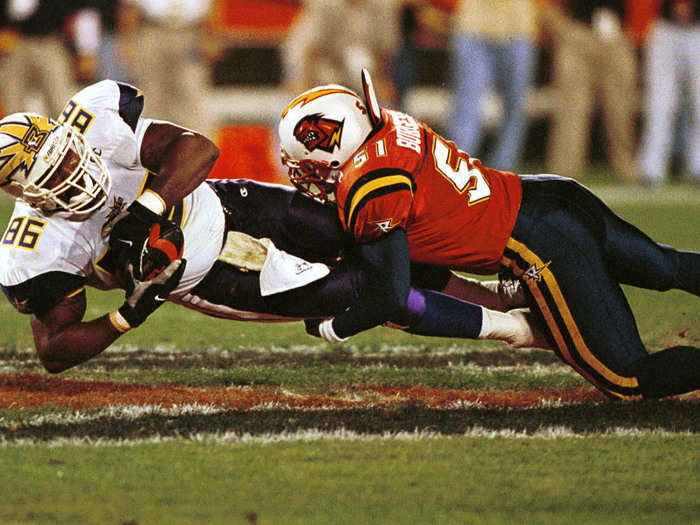
Source: GQ
Looking back, McMahon didn't blame the media. Even when it got reviews like "bad football, bad lines and an overdose of political incorrectness," from the Chicago Tribune. He did regret failing to make it clear that it was football and not entertainment. He also regretted failing to give players enough time to practice.
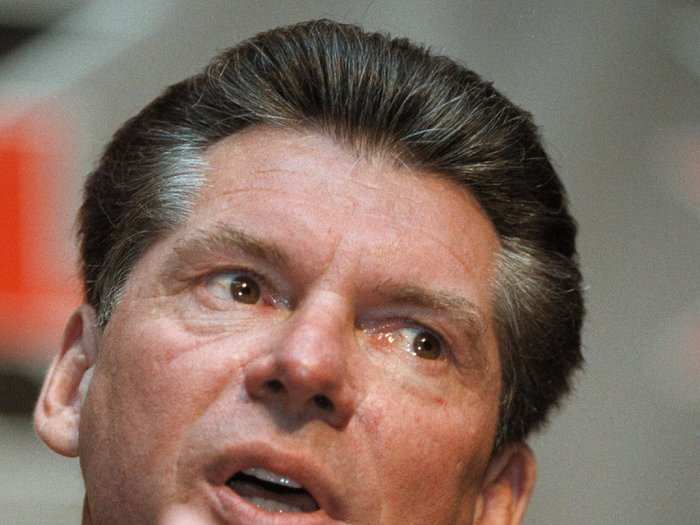
Sources: Wall Street Journal, HuffPost, Wall Street Journal
But the organizers weren't too despondent. Ebersol told the Los Angeles Times, "Strange as it may seem to hear, this was one of the most fun experiences of my life."
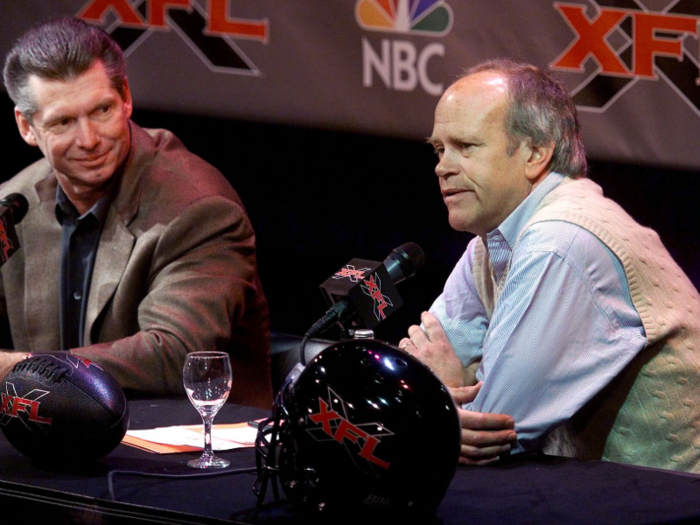
Source: Los Angeles Times
The XFL did have a lasting effect that changed the technology the NFL used. It used sky cams widely, recorded the sound of impact as players collided, and showed fans the mood in the locker room — all features of NFL games today.
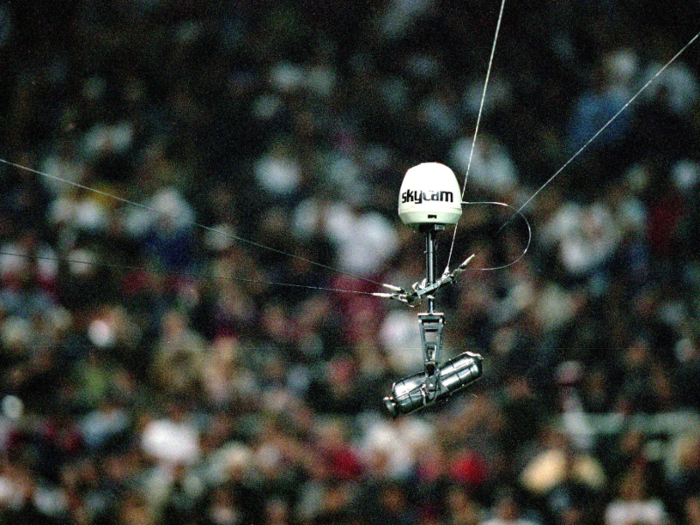
And now, somehow, it's coming back — this time without the cheerleaders. McMahon also made it clear that politics or social issues aren't welcome. When he first announced the return of the XFL in 2018, he said all players would have to stand for the national anthem, and no player who had been arrested would be allowed to play.
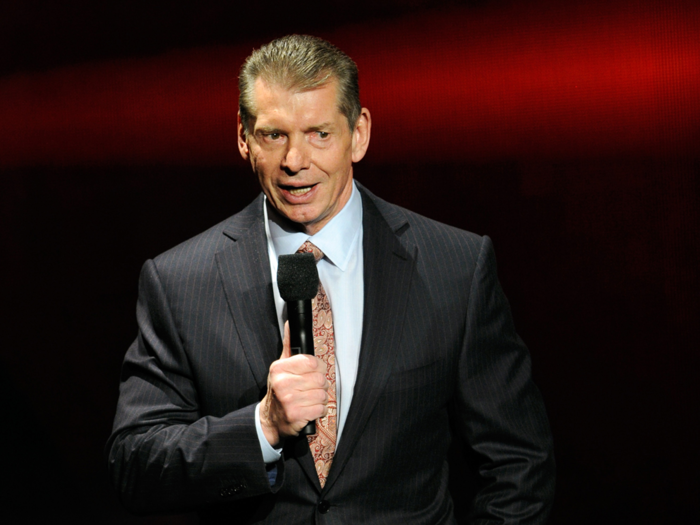
Sources: LA Magazine, CBS Sports, The Ringer, Fortune
The first game is scheduled for February 8, the weekend after the Super Bowl. Training is well underway.
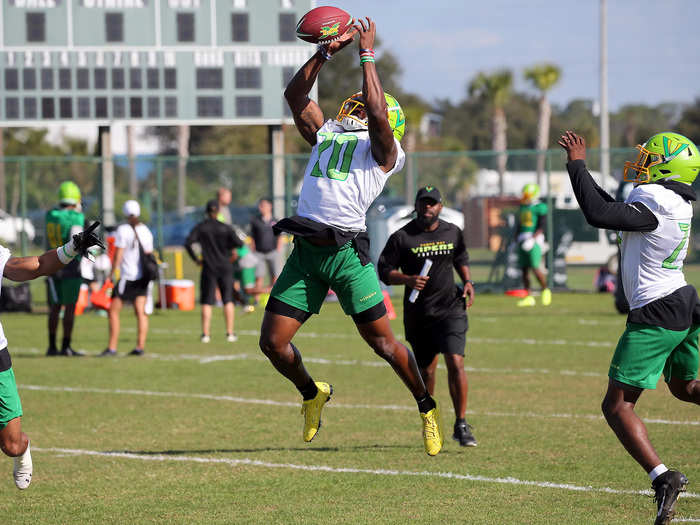
Sources: The Ringer, Business Insider, XFL
Popular Right Now
Popular Keywords
Advertisement
